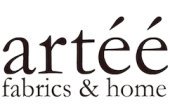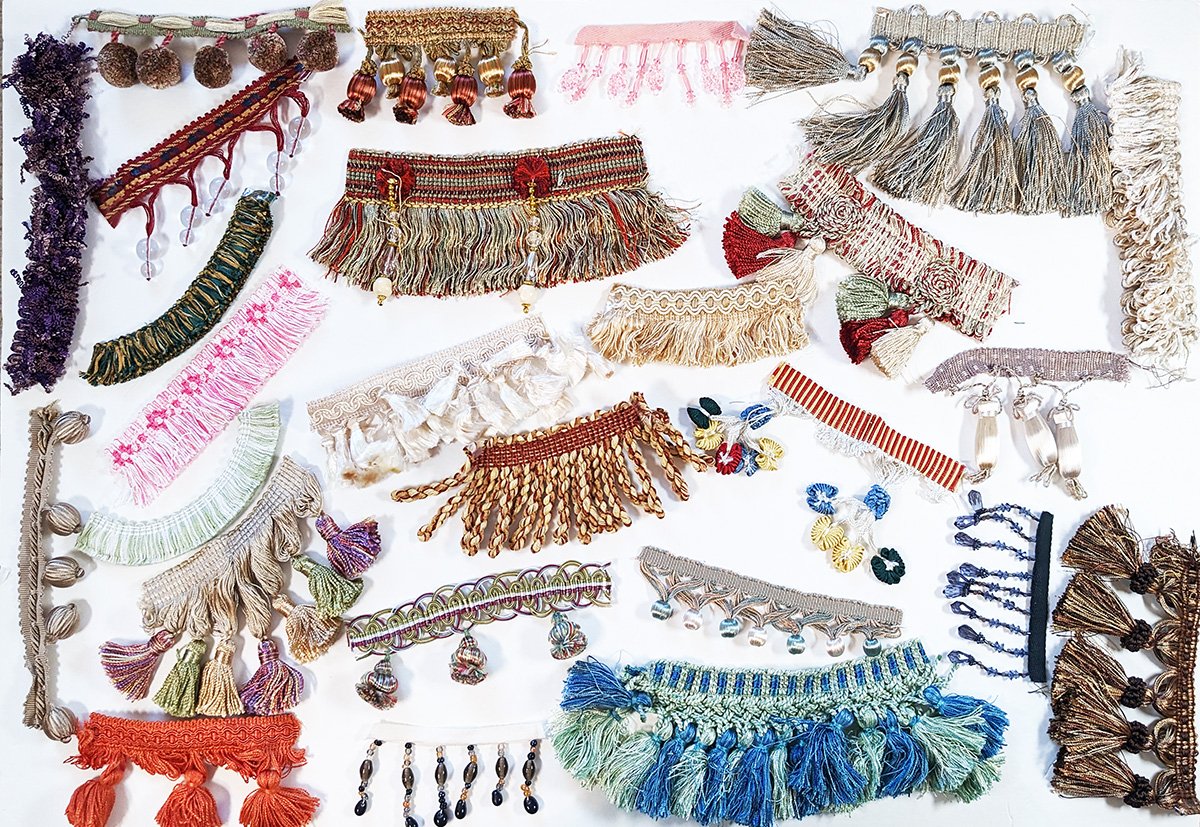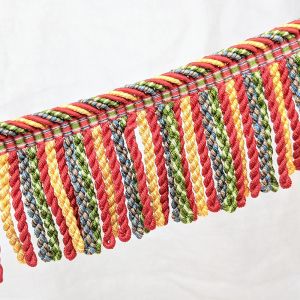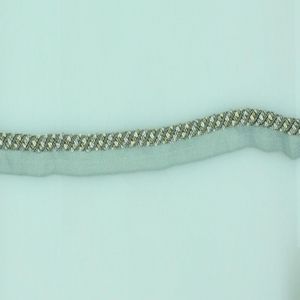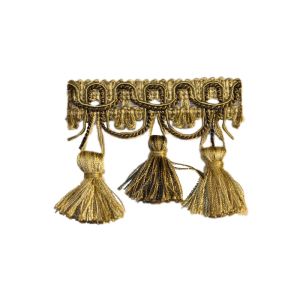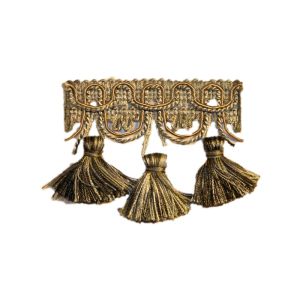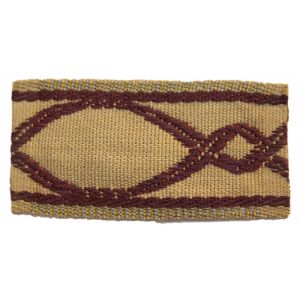Trims - Fringes
Fringes can be used to add texture, movement, and visual interest to a variety of home decorating projects. There are several different types of decorative fringes that are commonly used in home decorating, including:
Bullion fringe is a thick, tassel-like fringe that is often used on the edges of curtains and drapes. It is made by wrapping a cord with thread or yarn, creating a dense, braided effect. Bullion fringe is typically used on formal drapes and upholstery, and can be made from a variety of materials, including silk, rayon, and cotton.
Brush fringe is a type of fringe that is made by attaching long, thin fibers to a cord or ribbon. It is often used on the edges of decorative pillows, lampshades, and curtains. Brush fringe can be made from a variety of materials, including cotton, silk, and synthetic fibers.
Beaded fringe is a type of fringe that features small beads or sequins that are attached to a cord or ribbon. It is often used on the edges of decorative pillows and curtains, as well as on lampshades and other home decor items. Beaded fringe can be made from a variety of materials, including glass, plastic, and metal.
Tassel fringe is a type of fringe that features small tassels attached to a cord or ribbon. It is often used on the edges of decorative pillows, throws, and curtains. Tassel fringe can be made from a variety of materials, including silk, rayon, and cotton.
Gimp fringe is a type of fringe that features a decorative braid or cord that is attached to a plain fringe. It is often used on the edges of decorative pillows, drapes, and lampshades. Gimp fringe can be made from a variety of materials, including silk, rayon, and cotton.
These are made from thin, flexible chains. They are often used on pillows, curtains, and upholstery to add a modern, industrial look.
These are made from small, fluffy balls of yarn. They are often used on pillows, curtains, and upholstery to add a whimsical, playful look.
Bullion fringe
Brush fringe
Beaded fringe
Tassel fringe
Gimp fringe
Chainette fringes
Pom-pom fringes
Fringes can be used in a variety of ways to add color, texture, and visual interest to a home decorating project. Here are a few examples of how cord and cord trims can be used in home decorating:
Decorative fringes are used in home decorating to add interest, texture, and personality to a wide range of items, including drapery, decorative pillows, lampshades, and even furniture. Here are a few examples of how decorative fringes are used in home decorating:
Fringes are commonly used on the edges of curtains and drapes to add a decorative touch. Bullion fringe, brush fringe, and tassel fringe are all popular options for drapery. For example, a set of velvet drapes with a thick, gold bullion fringe along the bottom edge would add a touch of luxury and sophistication to a formal living room.
Fringes are often used on decorative pillows to add texture and visual interest. Beaded fringe, brush fringe, and tassel fringe are all popular options for decorative pillows. For example, a pair of bohemian-inspired throw pillows with a colorful brush fringe along the edge would add a playful, eclectic touch to a casual living room.
Fringes can also be used on lampshades to add a decorative touch. Beaded fringe, brush fringe, and gimp fringe are all popular options for lampshades. For example, a classic table lamp with a simple, white linen shade could be transformed into a statement piece with the addition of a bold, black gimp fringe along the bottom edge.
Fringes can even be used on furniture to add a touch of whimsy or elegance. Bullion fringe and brush fringe are popular options for upholstery. For example, a classic wingback chair with a neutral linen upholstery could be updated with the addition of a playful brush fringe along the bottom edge.
Drapery
Decorative pillows
Lampshades
Furniture
Overall, decorative fringes are a versatile and easy way to add personality and interest to a wide range of home decor items, particularly in drapery and decorative pillows.
It is important to note that trims come in different materials, colors and thickness which can change the overall aesthetic of the project. Also, fringes can be used in combination with other decorating elements such as tassels, cords, beads, and embroidery for added visual interest.
